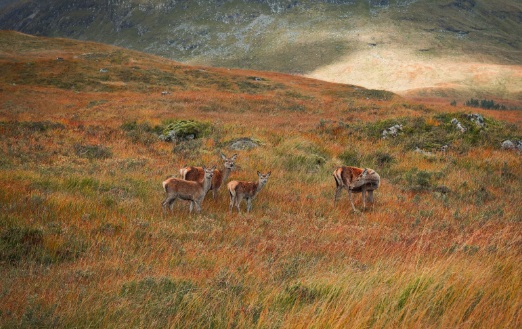The West Highland Way was officially launched in 1980, and the route has been used by thousands of hikers from different parts of the world. These included the old drovers’ tracks, military roads, and old coaching roads which are known to have been used for several centuries. This is an experience cherished by every adventurer as they seem to tread on historical grounds with the trails once trodden on by farmers and soldiers.
It starts at Milngavie, which is towards Glasgow, and takes walkers through a range of terrains, which only get more breathtaking as they progress. It runs through farm country and along Loch Lomond, through the Trossachs National Park, and into remote highland country characterized by dramatic mountains, glens, and lochs. Despite this, the scenic trail and the overall experience are worth it since the trail is not easy for even the experienced hiker.

Physical Exertion on the Trail
So, the West Highland Way is not as extreme as other long-distance walking paths. However, it implies certain difficulties that can be felt if one prepares for the walk inadequately. The trail can be divided into reasonable sections, and a day’s hike may vary from ten to twenty miles. It is easier in some parts, particularly around the north end of Loch Lomond or during the first few days, but as the taker gets closer to the Highlands, parts become more challenging.
One of the most challenging things about the walk is that it comes with different types of terrains. The first areas that are explored include flat ground or slightly inclined and the trails are fairly smooth, but things take a turn when hikers find themselves in the Highland region. The one between Kingshouse and Kinlochleven known as the Devil’s Staircase is more infamous. The stepped climb at the beginning of this portion is steep and the path zigzags up this slope but the top offers great views over the valley including the mountains and glens as far as the eye can see.
Another possible difficulty is weather conditions. This means there is always a probability of having bad weather when recording a particular scene even if it is in the warm summer season of Scotland. It is advisable to walk with a raincoat, umbrella, or any protective gear since there could probably be instances of sudden rains, strong winds, or even snow especially for the Rannoch Moor territory and towards the closing stages of the trek. Warm and waterproof clothing and equipment, as well as safe and proper shoes, are crucial to endure the conditions and avoid risks on the journey.
Some people usually experience ailments such as blisters on the feet, muscle fatigue, and sore joints because of long-distance trekking. These physical pressures can be minimized by taking regular breaks, drinking plenty of water before the walk, and even a small amount of preliminary training, but the trail will challenge the stamina of even those used to hiking.
Solitude
In addition, endurance is not limited to physical stamina alone but also manifests itself in the mental determination required when traversing West Highland Way. The trail can be difficult and the terrain can be desolate in the later stages of the journey. While the serenity of the hills appeals to many hikers, the solitude that comes with the area can be strenuous both physically and psychologically if one is walking alone. For example, Rannoch Moor is miles of emptiness with occasional sheep and a few houses scattered throughout.
However, solitude can also be one of the trail’s greatest charms. For those seeking to disconnect from the busyness of modern life, the West Highland Way offers an opportunity to embrace silence and reflection.

Scenic Wonders
The scenery in particular on the West Highland Way remains one of the beautiful appeals of the route. Since the route traverses some of the picturesque regions of Scotland, the trekkers are in for an aerial delight of their lifetime. Loch Lomond, which is Scotland’s largest inland water body, is scenic and surrounded by hills and woods that reflect on the water. Ben Lomond towering high above the east shore is the next peak to tackle if you have the energy left in you at this part of the trail.
Stretching out to a vast expanse of nearly 250 square kilometers, Rannoch Moor is one of the largest wildernesss of Europe and has a rather bleak and spooky appeal to it. This huge area of moor and lakes is home to much wildlife, and it is possible to see red deer, golden eagle, and even the very rare Scottish wildcat if one’s lucky. The feeling of being amidst nature becomes even more profound as you traverse across this rather barren but enchanting territory.
A particularly fascinating aspect of the West Highland Way experience is the issue of hospitality on the route. Still, the trail is pretty populated with small villages, inns, and guesthouses where travelers can take a break and have some food.
To Sum Up, arriving in Fort William, which is considered the official end of the West Highland Way route, brings a sense of relief accompanied by pride in one’s accomplishments. The sight of Ben Nevis towering over the town after hiking for days through such a diverse and beautiful area is a great incentive. It has become a tradition among walkers to end their trek with a climb up Ben Nevis itself, which is another attraction for those who want that extra challenge.
